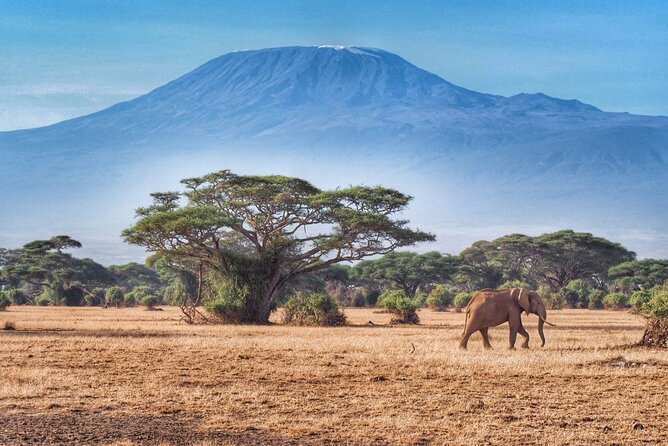1. The Masai Mara National Reserve, also known as Maasai Mara National Park, is a renowned wildlife reserve located in southwestern Kenya. It is named after the Maasai people and the Mara River that runs through the reserve. Here are some interesting facts and a description of the park:
- Size: Covering an area of approximately 1,510 square kilometers (583 square miles), the Masai Mara National Reserve is one of Africa’s most famous and largest game reserves.
- Wildlife: The reserve is renowned for its exceptional wildlife population, including the \"Big Five\" (elephant, lion, leopard, buffalo, and rhinoceros). It is also home to numerous other species, such as cheetahs, zebras, giraffes, hyenas, wildebeests, gazelles, and many others. The annual Great Migration of wildebeests and zebras, where millions of animals move between the Serengeti National Park in Tanzania and the Masai Mara, is a spectacular event to witness.
- Landscapes: Masai Mara National Reserve offers diverse landscapes, including open grasslands, acacia forests, riverine forests, and the iconic rolling plains. The reserve is known for its picturesque scenery, especially during sunrise and sunset when the golden hues create a breathtaking atmosphere.
- Cultural Significance: The Maasai people, renowned for their distinctive culture and traditional way of life, have inhabited the region for centuries. Many Maasai tribes still live around the reserve, preserving their customs and offering visitors an insight into their rich heritage.
2. Working Time & Contact:
- The Masai Mara National Reserve is open throughout the year, allowing visitors to experience its wildlife and landscapes. It is open from early morning until sunset.
- As for contact information, the reserve does not have a specific phone number. However, you can contact the Narok County Council or the local tourism offices in Kenya for inquiries.
3. Ticket Info & Transportation:
- To enter the Masai Mara National Reserve, visitors need to pay an entrance fee. The fee varies for residents and non-residents, with different rates for adults and children. It is advisable to check the latest information on ticket prices before planning your visit.
- Transportation options to the reserve include road and air travel. Visitors can drive from Nairobi, the capital of Kenya, to the reserve, which takes approximately 5-6 hours depending on the route. Alternatively, there are domestic flights available from Nairobi and other major cities to several airstrips near the reserve. From there, visitors can arrange transfers to their accommodations within the park.










